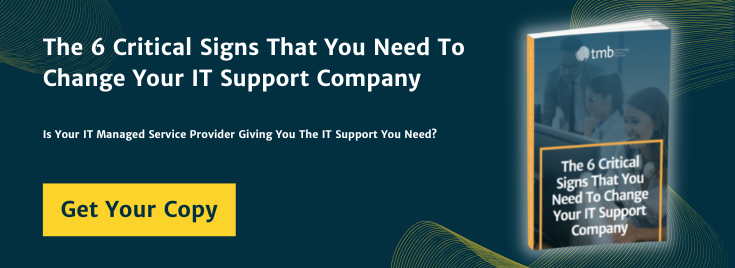Is Your IT Infrastructure Obsolete? How to Tell and What to Do About It
- Alexa Davis
- March 27, 2024
- 01:00 PM
- No Comments

Eventually, improvements to speed and memory, changing marketplace demands and workplaces, and mechanical problems will make even the most cutting-edge IT infrastructure outdated. Platform incompatibility is a leading cause of obsolescence. Not all OS builds and newer machines will work with legacy software and components! Planned obsolescence is also a factor - tech vendors can't afford to support their outdated hardware and software lines forever. Tech can also be 'leapfrogged' (rapidly replaced by a far better quality innovation that does the same tasks and more - think iPhone Vs Blackberry) and 'betamaxed' (outcompeted by an inferior but cheaper and more common solution). Watch out for sudden shifts in the market!
It's worth remembering that tech purchased late in a product cycle or at a significantly lower price than average often proves more vulnerable to rapid obsolescence. So, is your IT infrastructure approaching obsolescence? Let’s look at the tell-tale signs:
Warning Signs That Your IT Infrastructure is Becoming Outdated
Look out for:
- Low productivity - Staff failing to meet deadlines, using more up-to-date workaround and third-party programs, or experiencing sudden drops, outages, and data loss are signs something's wrong.
- Bad IT morale - Outdated, slow IT causes user frustration and avoidance!
- Recurring constraints on functionality - Older software often lacks more modern features such as suite integration, video conferencing options, and cloud storage.
- Increasing demand for IT Support - Outdated tech often requires more maintenance, workaround, and patching to keep going.
- 'Siloed' and 'Dead' Systems - The end of manufacturer support can mean that legacy tech is left 'orphaned', causing security and functionality issues.
- Increasing software glitches - Ageing installations tend to throw up more errors, crashes, and strange behaviour.
- Lack of recent training schemes - New tech requires staff skill updates!
- Signs of wear and tear - Yellowing cases and peeling stickers can often be the fastest way to gauge a PC's age.
What Can I Do About It?
You have three main options:
1. Replace obsolete hardware.
2. Find a way to upgrade legacy tech to modern standards (e.g. Buying a newer licence for the same program line, new parts, a new device).
3. Remove and dispose of the IT asset permanently and find a way to live without it.Which option you'll choose depends on the scale of IT replacement needed, what the asset was doing (or not) before your decision, your budget, the complexity of porting any data from it, and how vital it was to running your business. Extensive replacements inevitably cost more money and downtime to finish than simple swaps and patch upgrades over a weekend.
Upgrades and Managed IT Services from TMB
The best way to avoid wide-scale IT obsolescence in your business is to adopt a managed strategy, whereby assets are replaced at fixed intervals, rather than be worked into the ground. TMB can help establish a plan that suits your business – spreading the cost of IT upgrades and ensuring your software and hardware supports your business goals. For a personalised quote or to find out more about what’s involved, get in touch with us today.
Image Source: Canva



